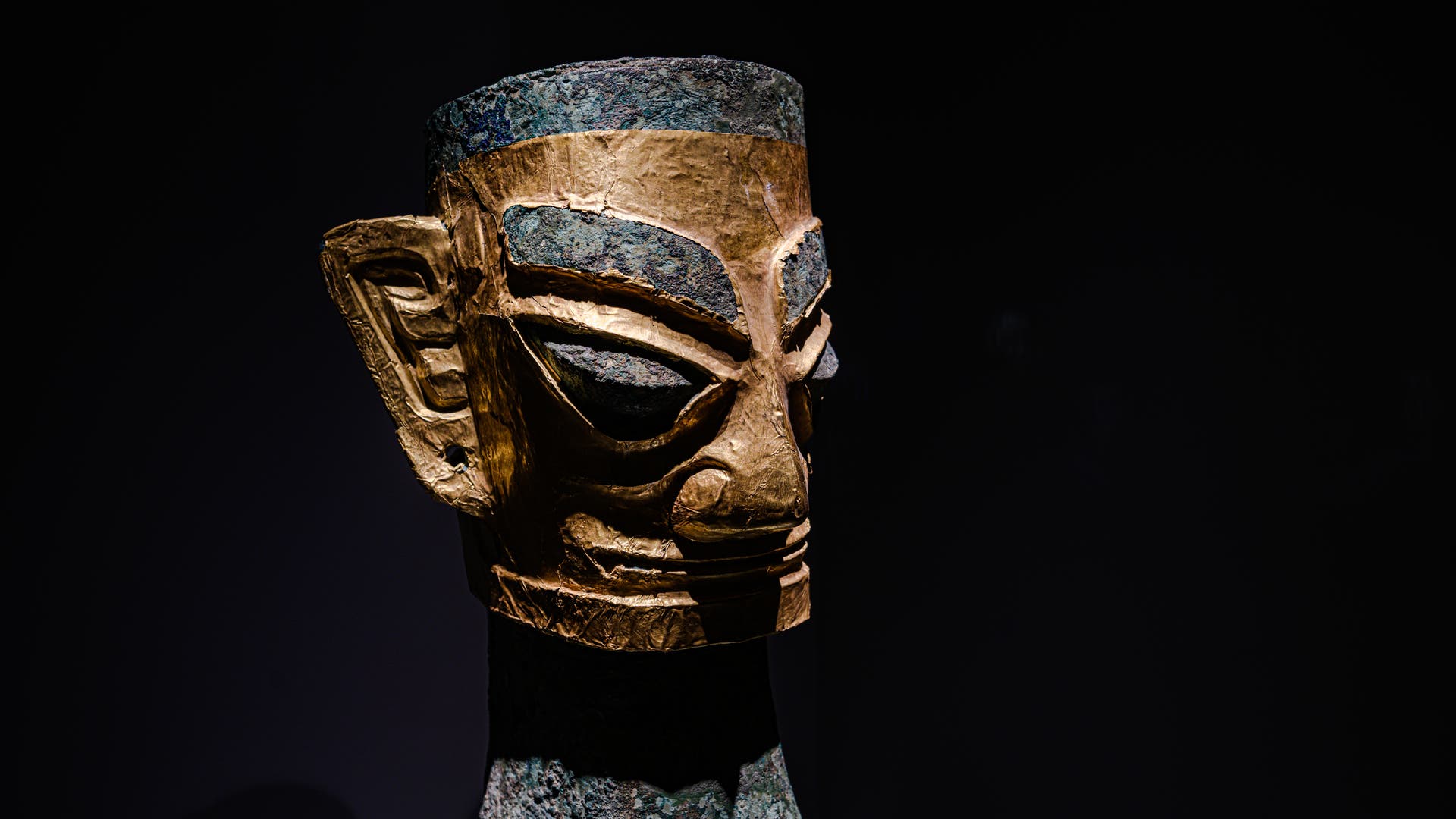In any case, the Sanxingdui people sacrificed their most valuable possession. “They were elements that were previously very important in society,” Shaw says. “There are no things that are used in everyday life, but they are likely to be things of cult,” Wertmann adds.
© Alamy / View Stock (Details)
staring eyes | On the older bronze head, the ears stand out, the mouth is wide and the pupils stand out. It is not known which creature will be depicted.
The many new discoveries also inspire international experts such as the American archaeologist Rowan Vlad of Harvard University. “We have a lot of material from the six new pits that we can compare to learn more about the actual ritual and its meaning,” Vlad says. He’s interested in why different things are layered and what the top layer is all about: elephant tusks. Prospectors found 80 of them in a hole – a very valuable commodity. Only male elephants have very long ivory tusks. Vlad said that hunting them and then putting such a large amount in an offering pit is a testament to the strength of the people at that time. Such a hunt requires a high degree of organization and must extend over large areas.
In general, elephants should play an important role. Patrick Wertman is convinced of this, too. The archaeologist points out that elephants were local and roaming in Sichuan Province at that time. “They are still there today in a little bit southwest.” And the animals scattered everywhere in the pits. Wertmann believes that the Sansingdui people may have worshiped them. It refers to the large statue that may have had tusks in the openings of its hands. Elephant skulls are depicted on the pedestal of the figure. Was she a kind of elephant god? “This is conceivable, but not yet answered,” Wertmann explains.
China’s enthusiasm for its history
Wealth, elaborate objects, the ability to work metals such as gold or alloys such as bronze, a great deal of organization are all indicators of a highly developed culture. The decoration and type of objects were unique to China, differing from many known finds in the Yellow River regions of central China. So the enthusiasm in China is high right now. “The public interest is enormous,” says Lothar von Falkenhausen, professor of Chinese archeology at the University of California, Los Angeles, and expert on the Chinese Bronze Age. For example, new museums have appeared in the Jinsha district of the regional capital Chengdu. In March 2021, state television also broadcast live for several days about the excavations at Sanchingdwe, Patrick Wertmann knows.
The new finds from Sanxingdui in China have been ranked as one of the most important finds in the country, and even more important than the terracotta army in the tomb of the first emperor. The government has prioritized the site because of the current excavations, and orders have been issued to archaeologists from across the country, says Anahin, who is in close contact with Chinese researchers. More than 120 scientists are currently working on the excavation site.
Excavations and the protection of antiquities in China are also being promoted at the highest level in other fields: in the past two years, President Xi Jinping has repeatedly stated that archeology should not only research cultural history, but also be politically and socially important. According to the state news agency Xinhuanet. The excavations reveal the origin and development of Chinese culture, its glorious achievements and great contributions to world culture, Xi said. This requires an archeology of Chinese determination and conviction. “We’re still working on exactly what that looks like,” says Patrick Wertman. “But one thing is certain: Archeology is very encouraging in China.”

“Alcohol buff. Troublemaker. Introvert. Student. Social media lover. Web ninja. Bacon fan. Reader.”







More Stories
Mission ‘Sunrise III’: Recovering Data Storage in Canada – Science
Ecologists Celebrate New Xesap National Park in Laos | Science
Is the wrong diet making you forget?